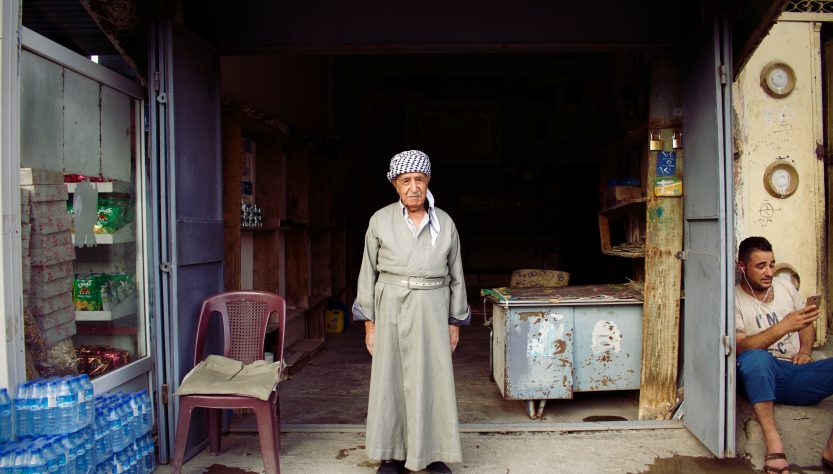From the busy streets of Baghdad to the vibrant business hubs in Erbil, the story of Iraq’s labor force tells us a tale of resilience, adaptation, and growth. Recently World Bank has released the latest employment market data of Iraq. The previous release was in 2011. In the ever-changing landscape of Iraq’s employment market, a decade can bring about remarkable transformations. A lot of remarkable changes happened in the employment market hence there is a need to explore what is the status quo operandi. This article studies Iraq’s employment market and explores the shifts and dynamics that occurred during the years 2011 to 2022.
Over these years, Iraq has seen significant changes both internally and externally from geopolitical changes to economic reforms from technological advancements to diversified economic opportunities, Iraq has changed to witness the emergence of large firms from a small-scale enterprise environment. The article further analyses how employment markets multifaceted nature with various sectors, regions and firms play distinct roles. The analysis brings into light the trends that can explain the challenges faced by different sectors, factors that have influenced the transformation and the opportunities that are in rise in the labor market.
Further, we can delve into valuable perspectives that can lay the foundation for informed decisions and strategies for businesses policymakers and to the workforce in years ahead. Using World Bank enterprise survey data of Iraq, the article will meticulously examine the trends of everchanging terrain of employment to derive insights from the statistical figures.
To begin with, let us start with firm level composition analysis. To understand a nations employment market, it is essential to examine its firms based on their composition size.
Figure 1:
Source: Author’s own Computation data from World Bank
In figure 1, it can be observed that, how the distribution of employment across different scales of businesses has evolved over the past decade. In 2011, firms with 1-19 employees held a dominant position by accounting for a substantial 78.8% share of total employment, making them the backbone of the job market serving a wide range of industries and services.
However, in 2022, a significant shift occurred with share of small firms falling to 44.3% proving a substantial transformation. With this we can enquire those small enterprises faced challenges with time and employment landscape diversified.
On the other hand, medium sized firms with 20 to 99 employees experienced remarkable growth, with their share surging to 52.6% in 2022 from 21.2% in 2011. This indicates that medium sized firms have significantly increased in providing employment opportunities.
Large firms which did not even exist in 2011 have also developed, contributing to 3.1% of total employment indicating the presence of emergence of larger enterprises.
This transformation of firm size composition highlights the dynamic nature of employment market in Iraq, reflecting shifts in economic activities, investments, and changes in government policies.
In further, subsequent sections we will explore deeper into firm categories, how each contributes to job creation, firms that reduced jobs and the net job creation, challenges faced and their implications. Now let us explore the sectoral shifts in employment.
Figure 2: Sectoral Shifts in Employment: A Decade of Transformation (2011-2022)
Source: Author’s own Computation data from World Bank
In the Figure 2 it can be observed that the sector wise employment share in Iraq’s employment market. These sectors include food, wholesale & retail, manufacturing, services, and others.
Chemicals, Plastics and Rubber being the smallest sector of all has seen a growth accounting to 5.2% of total employment in 2022 from 0.5% in 2011, indicating industrial development and the growing rate of industries in this sector.
Food sector witnessed significant growth with its employment share rising to 13.0% in 2022 from 2.9% in 2011. This increase in share demonstrates demand for food related products and services, change in consumption patterns and expansion of agribusiness sector.
Non-metallic mineral products sector grew from 2.6% in 2011 to 5.4% in 2022. Other manufacturing saw surge in their employment shares, signifying adaptability of industries in Iraq.
Other Services which owned 40.1% share in 2011 maintained its prominence in 2022 as well and accounted to 51.2% of total employment. This sector has continued to be the major contributor to the employment landscape covering a wide array of service-oriented industries.
In 2011, Wholesale & Retail sector held the largest share at 52.9% signifying its pivotal role in the economy. Nevertheless in 2022, its share had drastically fallen to 16.0%. These hints change in consumer behavior, market dynamics and business landscape.
The adaptability of Iraq’s employment can be illuminated by these sectoral shifts. Where certain industries experienced remarkable growth while others had to adjust to changing demands. As stated earlier in the further sections, we will delve into challenges and opportunities within each sector, offering a comprehensive view of Iraq’s dynamic employment market with reference to gender, ownership type and exporter type.
To be continued…


